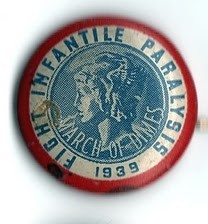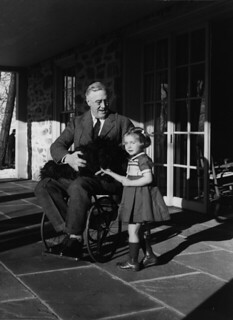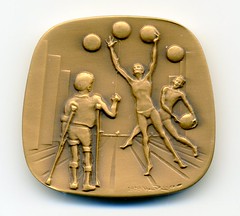
PREV ARTICLE
NEXT ARTICLE
FULL ISSUE
PREV FULL ISSUE
READER THOUGHTS ON THE MARCH OF DIMES DESIGNSTom DeLorey writes: I had not seen the proposed March of Dimes designs before. The first one, with the child walking away from the wheelchair, is unfortunately not appropriate. Having had polio myself before the vaccine was created, I can assure you that the research did not cure polio or its effects, though the vaccines it generated did blessedly prevent new cases of it.
The other two designs do not do much for me, though the dual-headed one is not that bad. I would like to see the reverse image of the torch on the Roosevelt dime used somehow, as it was a subtle recognition of the "Mothers March Against Polio," also known as the "Torch Drive," because tens of thousands of mothers went out door to door collecting dimes from their neighbors for the cause. This was after dark because they had to feed their families first, of course, and they carried flashlights or "torches" to light their way.
 I have to agree with Tom. My choice was too hasty; the vaccine indeed only prevents the disease, it does not cure it. So while an empty wheelchair could symbolize children who didn't GET the disease, when shown together with a walking child a viewer could get the wrong impression. I knew better, but my commentary played into that view as well. Sorry!
I have to agree with Tom. My choice was too hasty; the vaccine indeed only prevents the disease, it does not cure it. So while an empty wheelchair could symbolize children who didn't GET the disease, when shown together with a walking child a viewer could get the wrong impression. I knew better, but my commentary played into that view as well. Sorry!
While searching for the Roosevelt photo, I found a related item, a 1939 March of Dimes button, pictured at right. -Editor To read the complete article, see: Elizabeth Hayward Causes: March of Dime (theancestorfiles.blogspot.com/2010/11/elizabeth-hayward-causes-march-of-dimes.html) Mel Wacks writes:
Coin World published an article by Paul GIlkes on the outcome of the Commission of Fine Arts design review meeting.
-Editor

The review panel scrutinized 22 proposed obverse and 18 reverse designs. The recommended obverse features the Roosevelt dime, Dr. Jonas Salk, and a dime board. Dr. Salk discovered the anti-polio vaccine and the dime board was used to collect contributions to the March of Dimes. The CFA recommended removing the dime board from the proposed obverse. The recommended reverse features two fingers and a thumb grasping the edge of a 1946 Roosevelt dime to place it in a March of Dimes donation card. To the right is a pair of empty children’s polio braces. The large size of the fingers and card slot symbolizes the power of thousands who gave their pocket change to a good cause, according to the Mint, and the empty leg braces celebrate the victory over polio. The CFA recommended removing the two fingers from the design and adding to the design the dime board panel mebmbers recommended be removed from the obverse. The commemorative silver dollar, with a maximum authorization of 500,000 coins combined in Proof and Uncirculated versions, is authorized under provisions of the March of Dimes Commemorative Coin Act of 2012, Public Law 112-209.
To read the complete Coin World article, see:
Commission of Fine Arts recommends designs for 2015 March of Dimes commemorative silver dollar
(www.coinworld.com/news/2015-march-of-dimes-silver-dollar-designs-get-cfa-nod.html)
To read the earlier E-Sylum article, see:
MARCH OF DIMES COIN DESIGNS
(www.coinbooks.org/esylum_v17n21a22.html)
|


